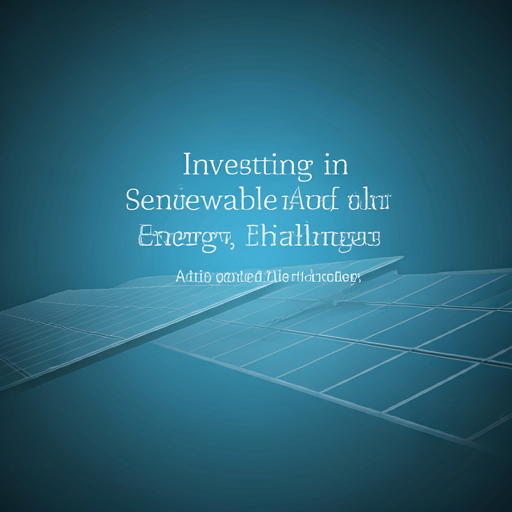Introduction to Renewable Energy and Cryptocurrency
Overview of Renewable Energy Sources
Renewable energy sources , such as solar, wind, and hydroelectric power, are gaining traction in the investment landscape. He recognizes the potential for substantial returns. These sources are not only sustainable but also increasingly cost-effective. This shift is noteworthy. Investors are drawn to the long-term viability of renewable energy. It’s a smart move. Cryptocurrency can facilitate transactions in this sector, enhancing transparency and efficiency. This integration is promising. As the world moves towards greener solutions, the synergy between renewable energy and cryptocurrency becomes more apparent. It’s an exciting development.
The Role of Cryptocurrency in the Energy Sector
Cryptocurrency plays a pivotal role in the energy sector by enabling decentralized transactions and enhancing liquidity. This innovation streamlines energy trading. Key benefits include:
He observes that these factors contribute to a more resilient energy marketplace. The integration of cryptocurrency can also facilitate peer-to-peer energy trading. This model empowers consumers. Overall, the intersection of cryptocurrency and energy presents significant opportunities. It’s worth exploring.
Investment Opportunities in Renewable Energy
Emerging Technologies and Innovations
Emerging technologies in renewable energy present significant investment opportunities. For instance, advancements in energy storage systems enhance grid reliability. This is crucial for sustainability. Additionally, innovations in solar panel efficiency are reducing costs and increasing output. These improvements attract investors. Furthermore, the development of smart grids allows for better energy management. This technology optimizes resource allocation. He notes that these factors collectively create a favorable investment climate. The potential for high returns is evident. Investors should consider these trends seriously. It’s a strategic move.
Government Incentives and Support
Government incentives significantly enhance investment opportunities in renewable energy. For example, tax credits and grants reduce initial capital expenditures. This makes projects more attractive. Additionally, feed-in tariffs guarantee fixed payments for energy produced. Such policies stabilize revenue streams. He observes that these incentives lower financial risks for investors. Furthermore, regulatory frameworks often support research and development initiatives. This fosters innovation in the sector. The cumulative effect of these measures is a robust investment environment. It’s a compelling reason to invest.
Challenges Facing Renewable Energy Investments
Market Volatility and Risk Factors
Market volatility poses significant challenges for renewable energy investments. Fluctuations in energy prices can impact profitability. This creates uncertainty for investors. Additionally, regulatory changes may alter the investment landscape. Such shifts can increase operational risks. He notes that technological advancements also introduce competitive pressures. This can affect market positioning. Furthermore, environmental factors, such as climate change, can disrupt energy production. These risks require careful consideration. Investors must remain vigilant.
Regulatory and Compliance Issues
Regulatory and compliance issues present significant challenges for renewable energy investments. Navigating complex legal frameworks can be daunting. This often leads to increased costs. Additionally, inconsistent regulations across regions create uncertainty. He believes this hinders investment decisions. Furthermore, compliance with environmental standards can be burdensome. This requires ongoing monitoring and adaptation. Investors must also consider potential penalties for non-compliance. These risks can impact profitability. Awareness is crucial for success.
Case Studies of Successful Investments
Notable Projects in Solar and Wind Energy
Notable projects in solar and wind energy demonstrate the potential for successful investments. For instance, the Hornsea One offshore wind farm in the UK is a landmark achievement. It generates over 1.2 gigawatts of power. This capacity can supply electricity to over a million homes. He highlights that such projects attract significant capital investment. Additionally, the Solar Star project in California showcases large-scale solar deployment. It produces enough energy to power 255,000 homes. These case studies illustrate the viability of renewable energy investments. They are inspiring examples.
Impact of Cryptocurrency on Investment Returns
The impact of cryptocurrency on investment returns is increasingly significant. For example, projects that accept cryptocurrency can attract a broader investor base. This diversification can enhance liquidity. He notes that using blockchain technology improves transaction transparency. This buildc investor confidence. Additionally, cryptocurrencies can facilitate faster capital flows . This is crucial for project financing.
Key benefits include:
These factors collectively contribute to improved investment returns. They are worth considering.
The Future of Renewable Energy and Cryptocurrency
Trends Shaping the Industry
Trends shaping the industry indicate a promising future for renewable energy and cryptocurrency. Increasing regulatory support is fostering innovation. This creates a favorable investment climate. Additionally, advancements in energy storage technology are enhancing grid stability. He believes this is essential for growth. Furthermore, the rise of decentralized finance (DeFi) is transforming funding mechanisms. This allows for more flexible capital allocation.
Key trends include:
These developments are reshaping the landscape. They are noteworthy.
Potential for Integration and Synergy
The potential for integration between renewable energy and cryptocurrency is substantial. This synergy can enhance operational efficiency. For instance, blockchain technology can streamline energy trading processes. This reduces transaction times significantly. He notes that decentralized energy markets empower consumers. This shift promotes greater participation in energy production. Additionally, smart contracts can automate payments for energy usage. This ensures timely transactions.
Key benefits include:
These factors create a compelling case for integration. They are promising developments.
Conclusion and Recommendations
Strategic Approaches for Investors
Investors should adopt strategic approaches to maximize returns in renewable energy. Diversification across various projects can mitigate risks. This spreads exposure effectively. He emphasizes the importance of thorough due diligence. Understanding market dynamics is crucial for informed decisions. Additionally, leveraging government incentives can enhance profitability. This can significantly improve cash flow.
Key strategies include:
These approaches can lead to successful investments. They are essential for long-term success.
Final Thoughts on the Intersection of Energy and Cryptocurrency
The intersection of energy and cryptocurrency presents unique opportunities. He believes this synergy can drive innovation. By integrating blockchain technology, energy transactions become more efficient. This reduces costs significantly. Additionally, the rise of decentralized energy markets empowers consumers. This shift enhances market participation.
Key considerations include:
These factors will shape the future landscape. They are worth exploring.
